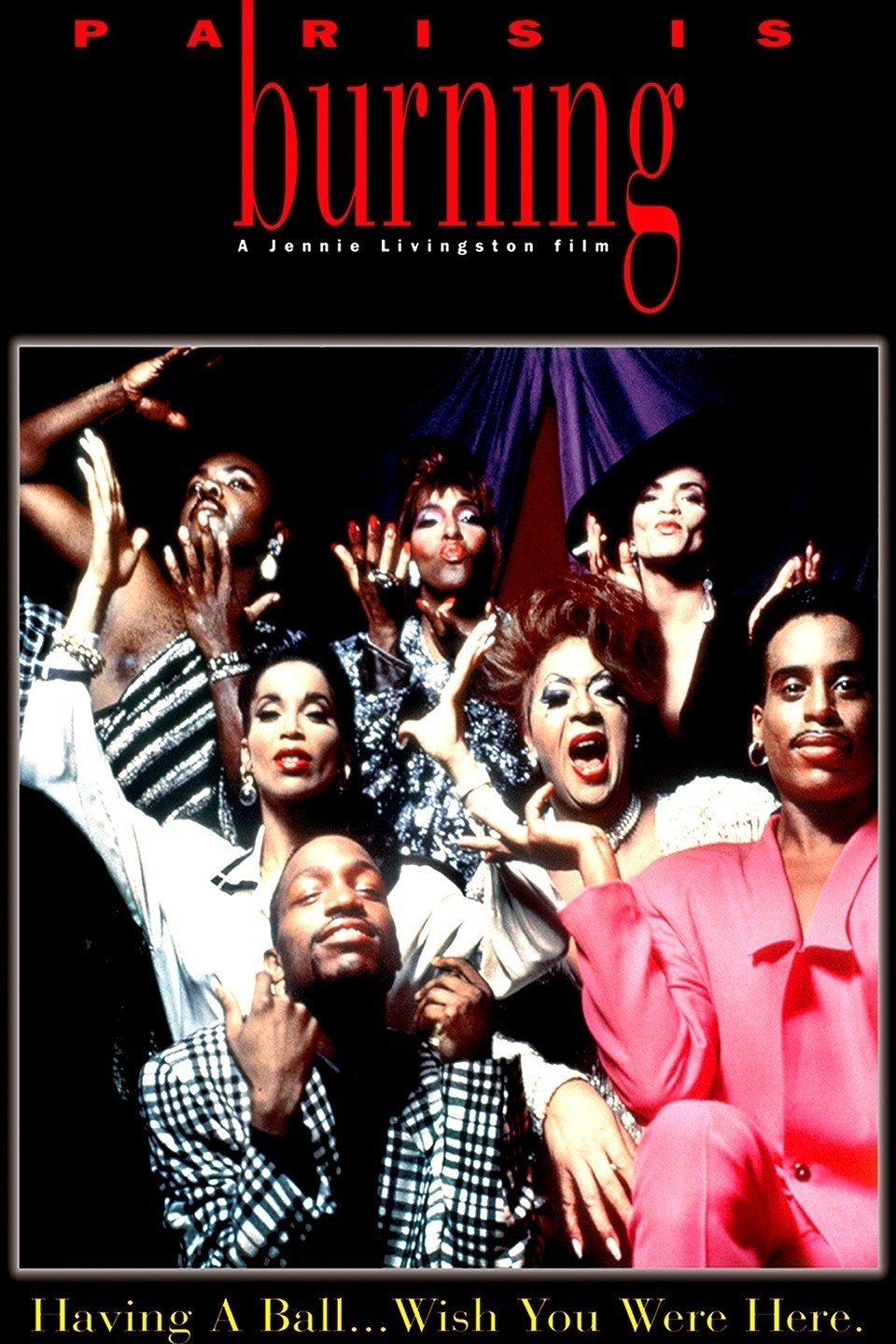I’ve seen this film a few times, but it never fails to make me emotional. There are so so many beautiful things shown of the New York drag scene, and it is hard not to love. I’ll cry over any older queer people, especially the Black drag queens who shaped the queer community today and led the path to rights and respect. I’ve even been known to cry over videos of young RuPaul while he was younger and just starting drag, so it isn’t surprising that this movie is important to me.
The film, which was made by Jennie Livingston in 1991, shows the life for a lot of drag queens in New York. Most of the drag artists were Black, and the documentary focused on their place in the queer community, talking not only to a lot of different people, but a lot of different age groups.
The documentary also shows a lot about the culture of Balls, which were put on as competitions for drag queens to dress up in different themes.

Balls and Families
The most beautiful part of the film is getting to explore the found families. Drag queens would be taken in by older queens, forming families, and the drag mothers would take care of them, while also improving their drag.
Because these younger drag queens would often be thrown out from their families and stripped of everything they knew, found families were so beyond important for survival.
Jennie Livingston
I have never been so upset with a queer person in my life actually, in any way that was valid (as a lesbian, I’m typically supporting gay rights and gay wrongs, as some would say, but I hate this woman).
There was a lot that Livingston could have done better in her creation of the film. She could have paid the queens well, considering how much money the film made, she could have done a better job at not exploiting poor queer people, and definitely could have mentioned how hard it was to be queer and on the streets, like so many of the drag queens in the movie were.
Livingston has stated before that she doesn’t understand why so many people find it controversial that a white woman made this film, and that, because she is also queer, she thought it was her right to produce the movie; however “when confronted with the drag queens and transsexuals of color in Paris Is Burning, one is confronted with the collision of race and sexuality – and poverty” (Contreras 126). The film glazed over how much the drag queens were beyond struggling to just survive, because Livingston wanted to only focus on what she enjoyed, Drag; however, because poverty, race, and sexuality are so crucial in the integrity of the topic, Livingston seriously missed the target when creating her film.
Almost as a cherry on top to Livingston’s poor decisions while making her film, she did not even remotely discuss the death of Venus Xtravaganza, who was shown frequently throughout the documentary.
Venus
I said earlier that I had in fact seen this film before, and yet, I didn’t even remember the death of Venus, because it is hardly ever mentioned. Venus, a forever 23 year old trans woman and drag queen, is highlighted a lot throughout the film. She talks so much about wanting to have a house, to have children, and to be a wife.
Bell Hooks, in “Is Paris Burning?” states that there is “an idealized fetishized vision of femininity that is white,” which is definitely related to Venus’s dreams of being a spoiled wealthy wife. Her dreams might have basic, and based on the white upper class, but I find a hard time blaming her for simply wanting to be seen as a person. She was not in a place to change the way American Society was built, and all she wanted was to be accepted into it. Can you really condemn her for that? For wanting respect? For wanting to not question if she was going to eat the next day? Or if she would have a place to sleep?
Regardless of whether people today, thirty years later, believe that she was ‘perpetualizing white feminism,’ it doesn’t really matter, since she never got to have any of it, because she was brutally murdered. Yet, Livingston hardly even mentions her horrible death. Livingston includes one short clip of one of Venus’s friends talking about how she died, and that was that. Nothing else about her was said for the rest of the film. The credits even include a memorial for one of Livingston’s family members, and nothing for Venus.
Venus lived an incredibly bright life, and brought a lot of joy to the people around her. She deserved so much better. Had Livingston given any of the queens a promise of being paid fairly, Venus might not have felt pressured to sell her body for money. Had she not been desperate, she could have still been here today.
There is no promise to anything, but the question begs for an answer: was Venus’s death really inevitable?
And, Because Livingston was incapable of saying it:
In memory of Venus Xtravaganza, a bright light to the trans and drag communities forever.






A link to more about I’m Your Venus, a documentary honoring Venus Xtravaganza
A link to Paris is Burning on Max
A link to more on the history of the underground ballroom culture




Citations
Contreras, Daniel T. (2004). “New Queer Cinema: Spectacle, Race, Utopia.” New Queer Cinema, Edinburgh University Press.
Hooks, Bell. (1992). “Is Paris Burning?” Black Looks, South End Press.
Contreras, Daniel T. (2004). “New Queer Cinema: Spectacle, Race, Utopia.” New Queer Cinema, Edinburgh University Press.


Leave a Reply